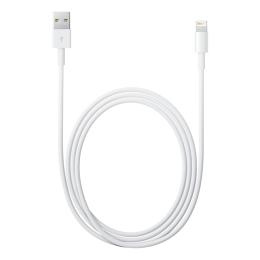What The Next iPhone Really Means For Music Copy Protection
Here’s the nightmare scenario if Apple removes the headphone jack on the next iPhone, as rumored:
Years from now, you’ll try to plug your phone into a speaker or set of headphones via the iPhone’s Lightning port, and the music won’t play. Maybe it’s because the headphones weren’t authorized by Apple, or because your Lightning-to-USB cable uses an outdated copy protection method. Whatever the case, you’re now locked out of listening to the music you’ve legally paid to hear—a problem that doesn’t exist in today’s analog audio age.
This is a hypothetical situation, but the concern is not entirely without merit. If the headphone jack starts disappearing from smartphones, its digital replacement could include new mechanisms for digital rights management. The only question is to what extent that copy protection will be enforced.
HDMI All Over Again?
In a widely read post for The Verge last week, Niley Patel suggested that digital audio would cause the same headaches as today’s HDCP mechanism for HDMI video. While HDCP is supposed to stop people from recording video signals from a Blu-ray player or cable box, pirates have routinely managed to circumvent it, and the spec has only become more draconian for legitimate users over time. For example, early adopters of 4K TVs may not be able to stream video from 4K content sources like Netflix because their hardware doesn’t support the latest HDCP specification.
Would the switch to digital audio present a similar problem?

In theory, yes, but keep in mind that digital audio connections aren’t new. Apple’s Lightning and older 30-pin connector use digital connections for speaker docks and other accessories, and USB speakers and headphones have been available for over a decade. So far, the nightmare lockout scenario hasn’t come to pass.
That’s not because copy protection mechanisms aren’t possible. In fact, USB audio has allowed for copy protection since 2006, says Rahman Ismail, CTO of the USB Implementers Forum. But to date, he’s not aware of any content owners who’ve required it.
“In the video space, you’re seeing people come down with required usage of HDCP when transmitting digital content over a digital medium, but you’re not seeing that happening for audio,” he says.
Ismail argues that most people aren’t interested in bootlegging music through audio output, and music services aren’t bothering to stop whoever might be. Music downloads from stores like iTunes and Amazon Music are already DRM-free, and streaming services such as Spotify and YouTube are becoming more popular than an owned collection of tracks anyway. In Ismail’s mind, closing the so-called “analog hole” is a non-issue.
“The ability to legally get music at very cost-competitive prices—and much more easily—it’s so prevalent that I don’t think [record labels] are scrambling like back in the Napster days, when everybody was trying to share their files and exchange music,” Ismail says.
Open To A Crackdown
Nonetheless, USB isn’t getting rid of copy protection as the standard evolves. In April, Intel proposed a new specification for digital audio in USB-C, the revamped connector that’s appearing in newer Android smartphones and some laptops (such as Apple’s own MacBook), and is the non-proprietary alternative to Apple’s Lightning connector. That proposal includes support for HDCP.

To Ismail, this is a matter of covering bases. “We don’t want to be left out of the choices people have, of what medium you can transfer audio over, if for example the content provider required you to implement encryption while you transferred it over the wire,” he says.
With some prodding, he allows that in the future, music providers may want to start protecting the high-fidelity audio that digital outputs can provide. Still, he doesn’t believe it’ll be possible to close the “analog hole,” as recording would still be possible through USB-to-analog adapters, and it’s hard to imagine analog output ever completely going away. (For this story, I contacted a handful of streaming music services and the Recording Industry Association of America, and none were able or willing to comment.)
“Maybe at that point in time, content providers would say, ‘I’m okay with low-res content being sent out over analog, but very high-fidelity content in the audio space needs to be content-protected,’” Ismail says. “I’m not saying that would happen, but that’s the only time we can envision somebody saying they want to use content protection.”
Ismail notes that implementing those protections wouldn’t be trivial, however. Content makers would have to put in the effort enforce those measures, for instance by making sure the music playback devices are requiring encryption keys. “You can’t just say, ‘Okay, you shall do this,’ and everyone starts complying,” Ismail says. “Enforcement is not free.”
The Record Labels’ Call
The adoption of digital audio output on smartphones wouldn’t be without benefits. Aside from higher-quality audio, it could allow for cheaper and lighter noise-canceling headphones, because the noise recording would happen on the smartphone side. It could also open up some unique features, like the ability to set EQ settings for a particular set of headphones and have them carry across devices.
But the switch would have drawbacks as well, especially if it came at the expense of a standard headphone jack. As The Verge‘s Patel notes, users would likely have to deal with higher headphone prices, accessibility limitations, and interoperability woes (provided Apple uses Lightning instead of the non-proprietary USB-C).
DRM isn’t the only potential headache, but it could be a breaking point that makes users revert to digital-to-analog dongles or demand phones with headphone jacks. In that sense, the music industry bears some responsibility for the fate of the entire end-to-end experience.
That might seem like a scary prospect, but keep in mind the industry stopped treating its customers like potential thieves a long time ago; now would be a terrible time to start all over again.
Fast Company , Read Full Story
(15)



